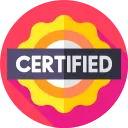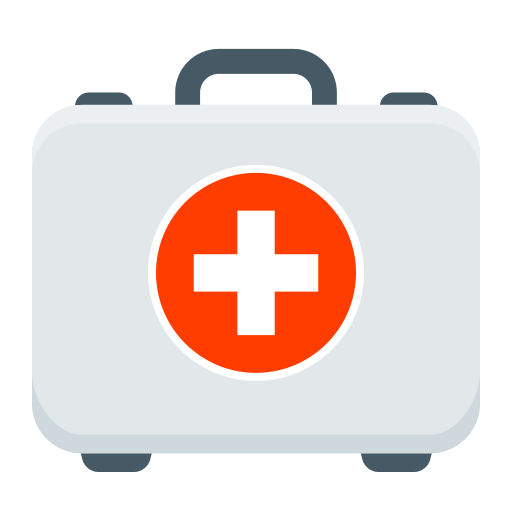FREE
daily Instructor: Dr. Katherine WilliamsAbout this Course
Advanced Respiratory Physiology and Pathophysiology
Gas Exchange and Transport
- Understanding alveolar ventilation and perfusion dynamics, including ventilation-perfusion (V/Q) matching and mismatch.
- Detailed study of oxygen and carbon dioxide transport in the blood, including the oxygen-hemoglobin dissociation curve and factors affecting oxygen affinity.
- Analysis of acid-base balance, including the bicarbonate buffering system, respiratory and metabolic acidosis and alkalosis, and compensation mechanisms.
- Practical application: Interpreting arterial blood gas (ABG) results to diagnose and manage respiratory and metabolic disorders. For example, distinguishing between acute and chronic respiratory failure based on pH, PaCO2, and bicarbonate levels.
Pulmonary Mechanics
- In-depth study of lung volumes and capacities, including tidal volume, residual volume, functional residual capacity, and vital capacity.
- Understanding airway resistance, lung compliance, and work of breathing, and their impact on respiratory function.
- Analysis of respiratory muscle function, including the diaphragm and accessory muscles of respiration, and their role in ventilation.
- Practical application: Using pulmonary function tests (PFTs) to assess lung function and diagnose obstructive and restrictive lung diseases. For example, differentiating between asthma and emphysema based on FEV1/FVC ratio and lung volumes.
Respiratory Pathophysiology
- Detailed study of the pathophysiology of common respiratory diseases, including asthma, chronic obstructive pulmonary disease (COPD), pneumonia, and acute respiratory distress syndrome (ARDS).
- Understanding the mechanisms of airway inflammation, bronchoconstriction, mucus hypersecretion, and alveolar damage in respiratory diseases.
- Analysis of the effects of respiratory diseases on gas exchange, pulmonary mechanics, and respiratory muscle function.
- Practical application: Applying pathophysiological principles to develop and implement effective respiratory care plans for patients with various respiratory diseases. For example, using bronchodilators, corticosteroids, and oxygen therapy to manage asthma exacerbations.
Advanced Mechanical Ventilation
Ventilator Modes and Settings
- Mastering advanced ventilator modes, including pressure-regulated volume control (PRVC), airway pressure release ventilation (APRV), and proportional assist ventilation (PAV).
- Understanding the principles of closed-loop ventilation and its application in managing mechanically ventilated patients.
- Detailed analysis of ventilator waveforms and their interpretation to optimize ventilator settings.
- Practical application: Selecting appropriate ventilator modes and settings based on the patient's respiratory status and disease process. For example, using APRV to improve oxygenation in patients with ARDS.
Ventilator Management and Troubleshooting
- Developing strategies for managing mechanically ventilated patients with complex respiratory problems, including ARDS, COPD, and neuromuscular disorders.
- Understanding the principles of lung-protective ventilation and its implementation to minimize ventilator-induced lung injury (VILI).
- Troubleshooting common ventilator alarms and problems, such as high pressure alarms, low tidal volume alarms, and auto-PEEP.
- Practical application: Implementing lung-protective ventilation strategies, such as low tidal volume ventilation and permissive hypercapnia, to minimize VILI in patients with ARDS.
Weaning and Extubation
- Mastering the process of weaning mechanically ventilated patients from ventilatory support, including assessment of readiness for weaning and selection of appropriate weaning techniques.
- Understanding the principles of spontaneous breathing trials (SBTs) and their use in predicting successful extubation.
- Managing complications during weaning and extubation, such as respiratory distress, stridor, and aspiration.
- Practical application: Conducting SBTs to assess patient readiness for extubation and implementing strategies to minimize complications during the weaning process. For example, using non-invasive ventilation (NIV) to support patients after extubation.
Pharmacology for Respiratory Care
Respiratory Medications
- In-depth study of the pharmacology of bronchodilators, including beta-adrenergic agonists, anticholinergics, and methylxanthines.
- Understanding the mechanisms of action, indications, contraindications, and side effects of inhaled corticosteroids and other anti-inflammatory agents.
- Analysis of the pharmacology of mucolytics, expectorants, and other medications used to manage airway secretions.
- Practical application: Selecting appropriate respiratory medications based on the patient's respiratory condition and individual needs. For example, using a combination of bronchodilators and inhaled corticosteroids to manage asthma symptoms.
Sedation and Analgesia
- Understanding the pharmacology of sedatives, including benzodiazepines, propofol, and dexmedetomidine.
- Analysis of the pharmacology of analgesics, including opioids and non-opioid pain relievers.
- Monitoring and managing the side effects of sedatives and analgesics, such as respiratory depression, hypotension, and delirium.
- Practical application: Using sedation and analgesia to manage pain and anxiety in mechanically ventilated patients, while minimizing the risk of adverse effects. For example, using a sedation scale to titrate sedative doses and prevent oversedation.
Antimicrobial Therapy
- Detailed study of the pharmacology of antibiotics used to treat respiratory infections, including pneumonia, bronchitis, and sinusitis.
- Understanding the principles of antimicrobial resistance and its impact on the treatment of respiratory infections.
- Monitoring and managing the side effects of antibiotics, such as allergic reactions, gastrointestinal upset, and nephrotoxicity.
- Practical application: Selecting appropriate antibiotics based on the suspected or confirmed pathogen and local antimicrobial resistance patterns. For example, using broad-spectrum antibiotics to treat community-acquired pneumonia.
Critical Care Monitoring and Diagnostics
Hemodynamic Monitoring
- Mastering the principles of hemodynamic monitoring, including arterial blood pressure monitoring, central venous pressure (CVP) monitoring, and pulmonary artery catheterization.
- Understanding the interpretation of hemodynamic parameters, such as cardiac output, stroke volume, and systemic vascular resistance.
- Using hemodynamic monitoring to assess and manage patients with shock, heart failure, and other critical illnesses.
- Practical application: Interpreting hemodynamic data to assess fluid status and guide fluid resuscitation in patients with septic shock.
Advanced Diagnostic Procedures
- Understanding the principles and techniques of bronchoscopy, thoracentesis, and other advanced diagnostic procedures.
- Preparing patients for and assisting with these procedures.
- Monitoring patients for complications during and after these procedures.
- Practical application: Assisting with bronchoscopy to obtain samples for microbiological analysis and diagnose lung infections.
Electrocardiography (ECG)
- Interpreting basic and advanced ECG rhythms to identify cardiac arrhythmias and other abnormalities.
- Understanding the relationship between cardiac arrhythmias and respiratory function.
- Managing patients with cardiac arrhythmias in the respiratory care setting.
- Practical application: Identifying atrial fibrillation on an ECG and understanding its potential impact on respiratory function.
Course Features
Honorary Certification
Receive a certificate before completing the course.
Expert Instructor
Get live study sessions from experts
Study Schedule
Plan your learning and get notified when it's time.
Multilingual Support
Learn and take exams in your native language
Pricing Plans
Currency
Sign in to change your currency
I'm not ready to enroll?
Tell us what’s stopping you, because it matters.
External Resources
Discussion Forum
Join the discussion!
No comments yet. Sign in to share your thoughts and connect with fellow learners.
Frequently Asked Questions
For detailed information about our Respiratory Therapy Certification course, including what you’ll learn and course objectives, please visit the "About This Course" section on this page.
The course is online, but you can select Networking Events at enrollment to meet people in person. This feature may not always be available.
We don’t have a physical office because the course is fully online. However, we partner with training providers worldwide to offer in-person sessions. You can arrange this by contacting us first and selecting features like Networking Events or Expert Instructors when enrolling.
Contact us to arrange one.
This course is accredited by Govur University, and we also offer accreditation to organizations and businesses through Govur Accreditation. For more information, visit our Accreditation Page.
Dr. Katherine Williams is the official representative for the Respiratory Therapy Certification course and is responsible for reviewing and scoring exam submissions. If you'd like guidance from a live instructor, you can select that option during enrollment.
The course doesn't have a fixed duration. It has 24 questions, and each question takes about 5 to 30 minutes to answer. You’ll receive your certificate once you’ve successfully answered most of the questions. Learn more here.
The course is always available, so you can start at any time that works for you!
We partner with various organizations to curate and select the best networking events, webinars, and instructor Q&A sessions throughout the year. You’ll receive more information about these opportunities when you enroll. This feature may not always be available.
You will receive a Certificate of Excellence when you score 75% or higher in the course, showing that you have learned about the course.
An Honorary Certificate allows you to receive a Certificate of Commitment right after enrolling, even if you haven’t finished the course. It’s ideal for busy professionals who need certification quickly but plan to complete the course later.
The price is based on your enrollment duration and selected features. Discounts increase with more days and features. You can also choose from plans for bundled options.
Choose a duration that fits your schedule. You can enroll for up to 6 days at a time.
No, you won't. Once you earn your certificate, you retain access to it and the completed exercises for life, even after your subscription expires. However, to take new exercises, you'll need to re-enroll if your subscription has run out.
To verify a certificate, visit the Verify Certificate page on our website and enter the 12-digit certificate ID. You can then confirm the authenticity of the certificate and review details such as the enrollment date, completed exercises, and their corresponding levels and scores.
Can't find answers to your questions?
Featured Courses
How to Get Certified

Complete the Course
Begin the course by selecting your experience level in the course content section:
Beginner: Master the material with interactive questions and enough time.
Intermediate: Get certified faster with hints and balanced questions.
Advanced: Challenge yourself with more questions and less time

Earn Your Certificate
To download and share your certificate, you must achieve a combined score of at least 75% on all questions answered.






